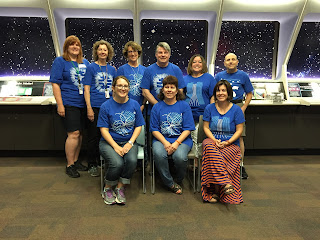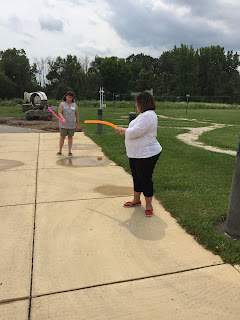we then explored magnetic fields with iron filings. We even made a magnetic field that resembled the fermi symbol of a quadrupole.
Next we explored static electricity and discovered that a humid day in August is not the best time to conduct static electricity demos. Then we moved on to current electricity, direct current. Kelly led a demo using energy stick that help demonstrate a circuit. Participants then made their own circuits by designing a schematic drawing first then constructing a circuit using LED s and three volt batteries.
Next we took a field trip to Wilson Hall and met two scientists / engineers to discuss their jobs and how they became involved in science. (Jessica Esquivel and Alyssa Miller)
After lunch Kelly led the group in several activities to sum up the week long workshop and to review resource sites that are available to the participants. Amanda Early explained how to sign up for field trips to The Lederman Science Center, which only workshop participants and their classes are eligible for.






















































